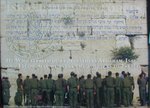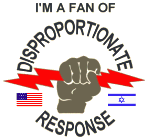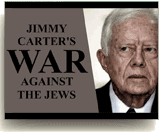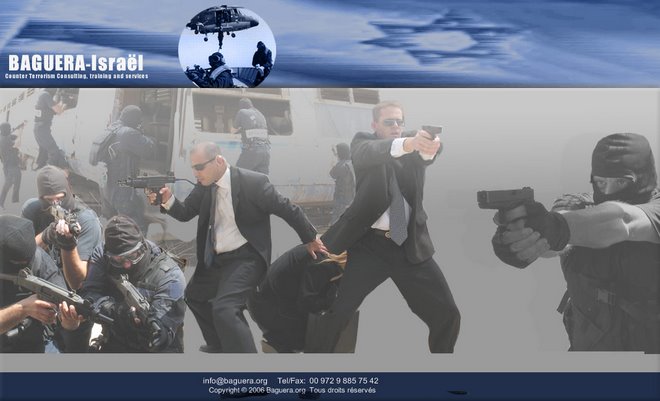Terrorism, safety and situational awareness
by Lt. Raymond E. Foster,
LAPD (ret.), MPA
Sponsored by ITT Night Vision
When the first aircraft struck the World Trade Center,
what were your thoughts? Did you think about terrorists?
Or, was your first thought something more like
“How could that happen?”
The first crash left most people trying
to figure out what human or mechanical error
could have caused the crash. However, a little
over 15 minutes later – and the instant Flight
175 came into view – we knew we were
under attack. As the jet slammed into the
South Tower of the World Trade Center,
our view changed and the response of
police and fire personnel to the WTC
and the other incidents changed.
Our reaction changed because the additional
information of the second aircraft altered our
perception of the first crash. Our perceptions
moved closer to reality because more data
gave meaning to and enhanced our
comprehension of what we were observing.
Situational awareness
“Situational awareness” was a term
originally used to describe the tactical
situation during aerial combat . While
the literal term doesn’t go back as far as
World War I, the idea surfaced then, when
pilots first took to the sky in combat.
At first, the term referred to the pilot’s
ability to know where he was in relation
to the enemy and the other pilots of his
flight. In reality, that is only positional
awareness. However, when pilots added
their knowledge of aircraft capabilities
and known battle tactics with positional
awareness, they were able to interpret,
comprehend and anticipate. The
comprehension of observations is
the essence of situational awareness.
Police officers use situational awareness
daily.While it has obvious applications for
street tactics, it likely is used most in the
development of reasonable suspicion (RS)
and probable cause (PC). Both RS and PC
are an officer’s interpretation of
observations based on their education,
training and experience.
Whenever you detain someone, conduct
a warrantless search or make an arrest,
you are practicing situational awareness.
Just as you and I were able to make better
arrests as we gained knowledge on the job,
we also were safer. Our safety was enhanced
because there is a predictive element to total
situational awareness.
Situational awareness has three levels –
perceiving critical factors, understanding
those factors and finally understanding what
those factors will cause to happen in the near
future. Just as we gained an edge over the
common criminal element by education,
training and experience, we can gain that
edge over terrorists by enhancing our
comprehension of what we observe as it
relates to terrorism. We can protect our
communities and ourselves with enhanced
situational awareness of terrorism.
Know what terrorism is In the first
article of this series,Terrorism:
Crime or Asymmetrical Warfare, we
noted that the “the definitionof a crime
dictates our response.” In that article we
further explored the FBI’s definition of
terrorism:
|
One of the most common delivery methods of explosives is through the use of a vehicle. Some of the indicators may be: • Vehicles that have a strong chemical smell, or the scent of something burning coming from them; • Signs of recent body work, especially of poor quality, or with patches welded to the cab or body of the truck; • Extra fuel tanks or antennas, or recent signs of a reinforced suspension; • Inappropriate license plates, misspelled artwork or badly executed stencil painting; • Heavily tinted windows, particularly if used in an unusual manner (for example, if the front screen of a delivery truck is tinted); and • Signs that the vehicle is heavily overloaded on its suspension. |
“Domestic terrorism refers to activities
that involve acts dangerous to human life
that are a violation of the criminal laws
of the United States or of any state;
appear to be intended to intimidate or
coerce a civilian population; to influence
the policy of a government by mass
destruction, assassination, or kidnapping;
and, occur primarily within the territorial
jurisdiction of the United States.
You will increase your situational awareness, or the
ability to use your comprehension of the facts, to
predict short-term future events by understanding
the history and nature of terrorism.
[Read
”Defining terrorism for law enforcement”]
Know your beat
If you received a radio call of a shooting
on the southwest corner of Jefferson
Boulevard and Central Avenue, you would
have some positional awareness, but not
much situational awareness. You would
know the best route to get to the call, and
probably the best way to approach, but little
more. However, what if you knew the location
was an apartment building rife with drug activity?
Alternatively, what if you knew the location
was a religiously affiliated daycare center?
Either set of facts would add to your situational
awareness, it would change the way in
which you handled your approach and
the call.
Most of the literature for first responders
on terrorism emphasizes the need to be aware
of the critical infrastructure in your community.
However, your definition of critical infrastructure
may limit your situational awareness somewhat.
As an example, theCritical Infrastructure and Key
Assets:
Definition and Identification report to
Congress ultimately defined critical
infrastructure as:
- “The framework of interdependent
network and systems comprising
identifiable industries, institutions
(including people and procedures),
and distribution capabilities that
provide a reliable flow of products
and services essential to the defense
and economic security of the
United States, the smoothing
function of government at all levels,
and society as a whole.”
Based on this definition, bridges, chemical
factories and government facilities, etc. are
part of the critical infrastructure. However,
given the purpose of terrorism, first responders
should be aware of their community’s political,
social and cultural infrastructure. A religiously
affiliated daycare center probably doesn’t fall
nto the category of critical infrastructure, yet
it would be part of your community’s social and
cultural infrastructure and in today’s world a
potential terrorist target.
Know the groups, their goals,
their tactics
Terrorist Planning Indicators
1. Possession of extremist or
radical literature;
2. Interest in law enforcement
tactics, yet not in law enforcement;
3. Surveillance of critical infrastructure
or political, cultural or social infrastructure
in the community;
4. Possession of or attempts to obtain
surveillance or planning materials, i.e.,
maps, photographs, blueprints, cameras,
surveillance equipment;
5. Possession of or attempts to obtain
materials for improvised explosive
devices i.e., chemicals, timers, wires or
other components;
6. Possession of (or the attempt to obtain)
fraudulent identification documents;
7. The rental of, or attempt to rent,
Storage units or a living space for a
large group of people;
8. Economical and non-descript lifestyle;
9. The abandonment of typical cultural
identifiers such as facial hair or clothing;
10. No interest in learning English; and,
11. Relationships with suspicious groups.
Note: This checklist is by no means
all-inclusive. It should be viewed as a
place from which to start your discussion
about counterterrorism planning.
Since 1996 the State Department has issued an
annual report on patterns of global terrorism.
Between 1996 and 2004, the varying reports
list well over one hundred different foreign
terrorist organizations. Furthermore, this
number does not include the large number
of domestic terrorist or potential domestic
terrorist groups and individuals. Clearly, it is
impossible for the first responder to have
in-depth knowledge about all of the potential
threats. Similarly, in Los Angeles it would be
difficult to have an in-depth understanding
of every gang ; however, it would be possible
to understand enough about gang members in
order to increase your situational awareness.
Here, in order to increase our situational
awareness, it is important to understand some
overarching principles about terrorists:
• For the terrorist, the end justifies the
means. The result is that no matter how
bad the act, if the terrorist perceives the
act as moving toward their goal, he or she
does not consider the impact of the act on
the individual or groups. Their only concern
is the impact of the act on their end goal.
• The planning and execution of most terrorist
acts seems to indicate that first responders are
dealing with criminals who have an above-average
intelligence and are tactically astute.
Research indicates that many terrorist leaders
come from middle-class families and are
relatively well educated.
• A key point of terrorism is always publicity
for the cause, through terror. Think of it this
way – in war, the point of a mine field is to
slow or stop enemy progression; with terrorism,
the point of an improvised explosive device along
a highway is to gain publicity for the cause.
• The target and the victim need not be the
same. On September 11th, the victims who
were killed or injured were not the targets.
The U.S. Government was the target. This
concept reinforces the idea that for every
terrorist, the end justifies the means.
Know current intelligence
The current national system for a terrorist
alert is often very general and requires the
average first responder to dig a little deeper
for information related to his or her agency.
There have been, however, instances when
the Department of Homeland Security (DHS)
has issued alerts that were specific enough
to be used independently. An alert that says
that financial institutions in a specific region
should be in a higher state of preparedness is
specific enough for first responders to take
action. Indeed, DHS not only issues alerts,
but general recommendations for action
based on those alerts. Every first responder
should have a good grasp of how a heightened
alert impacts his or her assignment.
One of the problems with American law
enforcement is that we tend to “stove-pipe”
critical communications. That is, we send
information up and down a specific chain of
command, often failing a timely dissemination
of the information to where it is most needed.
You can work to short-circuit this by developing
your own sources of information. Whether you
subscribe to the Department of Defense e-mail
briefings, the State Department e-mail advisories
or any one of the great public sources of Open
Source Intelligence, you should find a source of
information that you continually and regularly
consult for intelligence on the latest trends
in terrorism.
Total situational awareness is gained through
increased comprehension of what we observe.
It results in a greater ability to make short-term
predictions about what is going to happen and
therefore make decisions regarding our response.
Comprehension is gained through education,
training and experience. If you attain total
situational awareness, you will be better
ableto prevent, respond and apprehend.
About the Author
Lt Raymond E. Foster, LAPD (ret.), MPA is
author of Police Technology
(Prentice Hall,July 2004), and co-author of
Leadership: Texas Hold ‘em Style
(Quill Driver Books, August 2006),
From NYPD to LAPD: An Introduction to Policing
(Prentice Hall, July 2007), over fifty
articles on technology, policing,
leadership and terrorism and a dozen
educational Web sites like www.police-
writers.com. Raymond can be reached at
raymond@hitechcj.com or through his blog.
About ITT Night Vision's Sponsorship
of this Column
ITT Night Vision is sponsoring this column
in order to facilitate information sharing
across law enforcement around this
important topic and to support law
enforcement in their efforts to secure
the homeland and better prepare for and
respond to acts of terrorism.
Every year, ITT Night Vision partners with
various associations in support of the law
enforcement community, including the
IACP/ITT Community Policing Awards,
the Police Officer Safety Technology
(POST) program within IACP/SACOP, and
the Patrol and Tactical Operations
Committee (PTO) also within the IACP.
These efforts range from regional
sponsorships of K-9 and SWAT team
competitions to national and
international sponsorships of programs.
































 While doing IDF (Israel Defence Forces) reserve duty on a mountain overlooking the
While doing IDF (Israel Defence Forces) reserve duty on a mountain overlooking the 





No comments:
Post a Comment